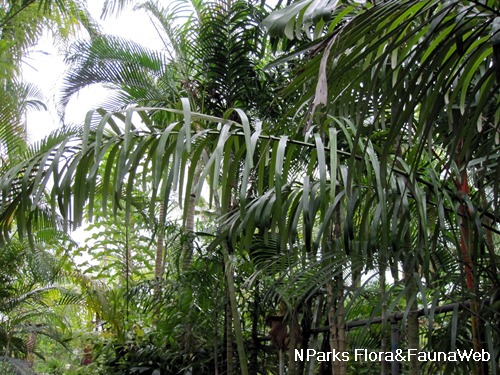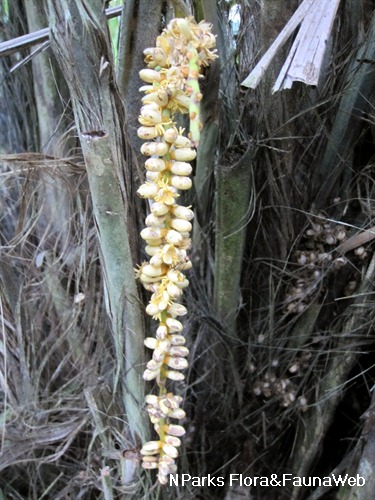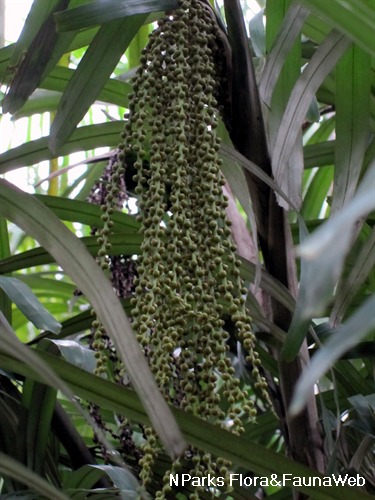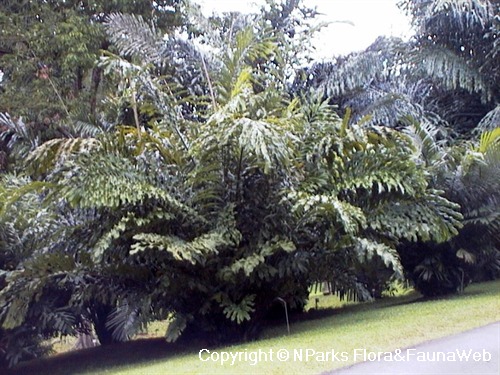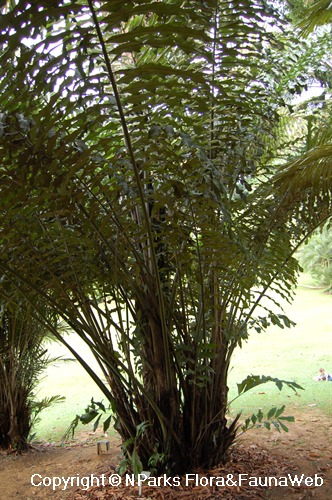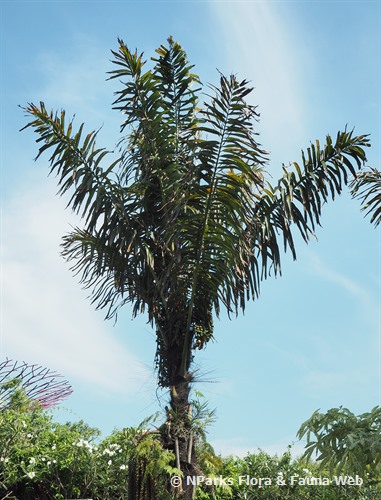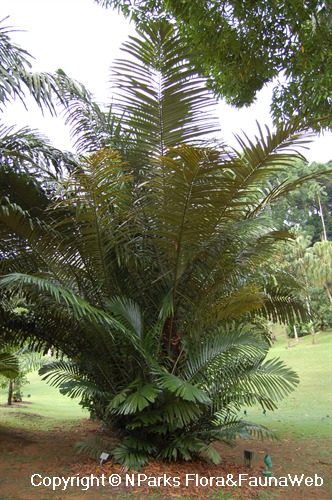
Back
Arenga australasica (H.Wendl. & Drude) S.T.Blake ex H.E.Moore
| Family Name: | Arecaceae (Palmae) |
| Synonyms: | Normanbya australasica |
| Common Name: | Australian Arenga Palm |
Name
Classifications and Characteristics
| Plant Growth Form | Palm (Clustered Habit) |
|---|---|
| Plant Shape | Fountain (Palm-like) |
Biogeography
| Native Distribution | Along the coast in the northern part of Australia |
|---|---|
| Native Habitat | Shoreline |
| Preferred Climate Zone | Highland / Montane |
| Local Conservation Status | Non-native |
Description and Ethnobotany
| Growth Form | Clump-forming palm with 1-3 dominant trunks. It produces numerous suckers at the base. |
|---|---|
| Foliage | Large pinnately compound leaves are 2-3.5 m long and supported by a 1.6 m long petiole. The narrowly linear leaflets (1 m long, 7 cm wide) are glossy dark green on top and grayish below. The leaflet tip is slightly notched. |
| Flowers | Flowers are small and yellow (1 cm wide), Only the lowermost inflorescence produces fruit. |
| Fruit | Round, globular fruits (2 cm wide) are red, purple or brown at maturity. Each fruit produces 1-3 seeds which have a hard, smooth coat. The seeds are covered in juicy flesh that contains skin-irritating crystals known as calcium oxalate. The crystals cause intense itchiness that lasts for hours. |
| Habitat | This species is endemic to Australia. It is found along the coast in the northern part of Australia. It is uncommon on the mainland, but common in some, nearby offshore islands. |
| Cultivation | This species grows best in sandy, well-drained soil. |
Landscaping Features
| Landscape Uses | Coastal, Beachfront / Shoreline |
|---|---|
| Usage Hazard - Cons Remarks | Fleshy tissue wrapped around the seeds causes intense itchiness upon contact which lasts for hours. |
Plant Care and Propagation
| Light Preference | Semi-Shade |
|---|---|
| Water Preference | Lots of Water |
| Plant Growth Rate | Moderate |
| Rootzone Tolerance | Well-Drained Soils, Saline Soils / Salt Spray |
Floral (Angiosperm)
| Flower & Plant Sexuality | Bisexual Flowers |
| Flower Colour(s) | Yellow / Golden |
|---|---|
| Flower Size | 1 cm |
Fruit, Seed and Spore
| Mature Fruit Colour(s) | Brown, Purple, Red |
|---|---|
| Mature Seed Texture(s) | Smooth |
| Seed Quantity Per Fruit | Few (1-5) |
Image Repository
Others
| Master ID | 31413 |
|---|---|
| Species ID | 5810 |
| Flora Disclaimer | The information in this website has been compiled from reliable sources, such as reference works on medicinal plants. It is not a substitute for medical advice or treatment and NParks does not purport to provide any medical advice. Readers should always consult his/her physician before using or consuming a plant for medicinal purposes. |

